Is your heavy sliding glass door constantly derailing? It’s a frustrating and potentially dangerous problem, but the fix is often simpler and cheaper than you might think.
The most common reason a sliding glass door comes off its track is due to worn-out, dirty, or broken rollers. Over time, these small wheels that carry the door’s weight degrade, causing misalignment and preventing smooth operation, which ultimately leads to derailment.
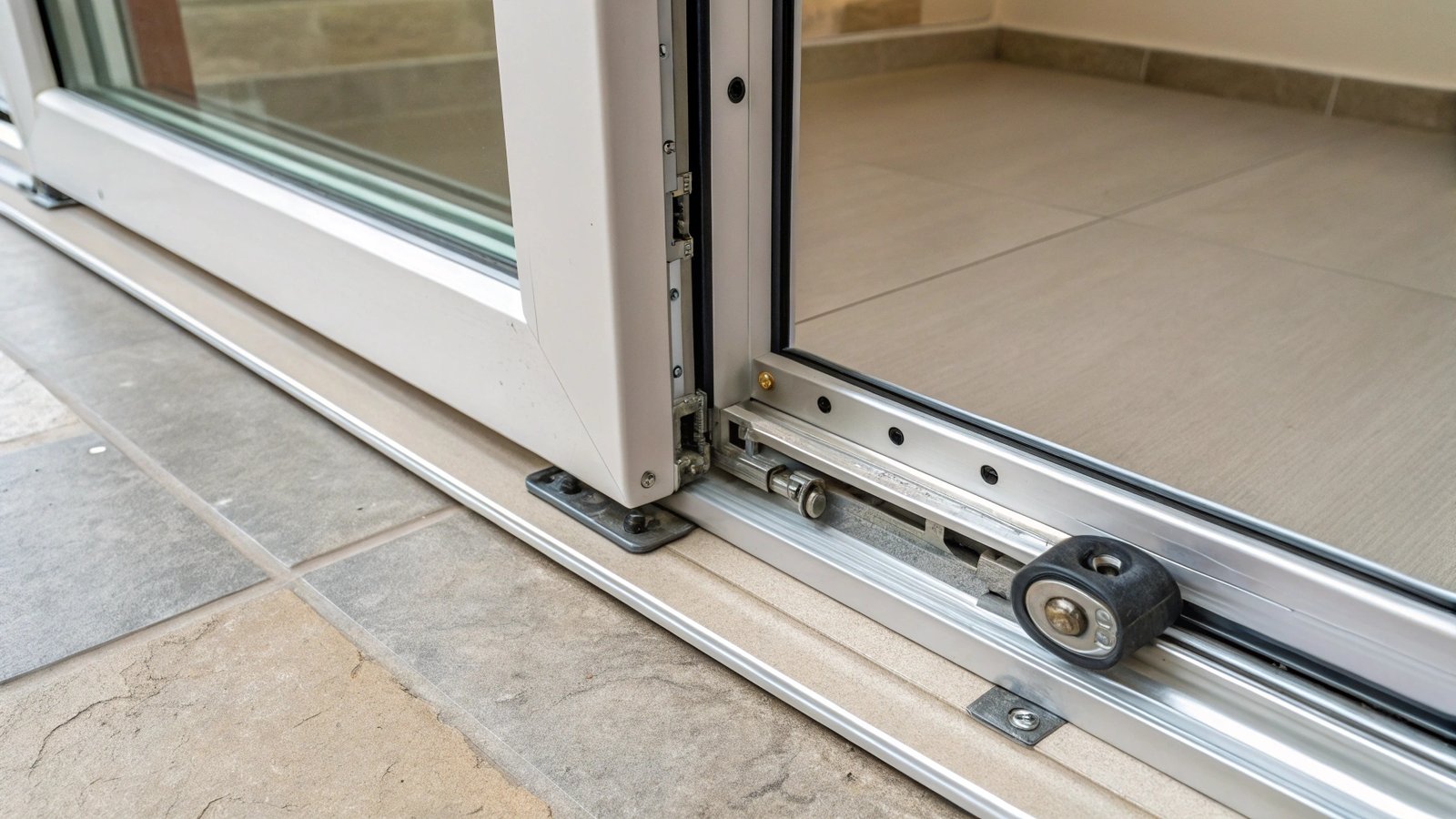
Fixing a sliding door that comes off the track is a problem I’ve encountered many times, both in my early days at the hardware factory and now as I help clients like Jacky source the best components. Many people assume they need a brand-new door, which is a huge expense. But in my experience, that’s rarely the case. The issue almost always comes down to the small, hardworking hardware components. Before you consider a costly replacement, let’s walk through how you can diagnose and solve the problem yourself. It’s about understanding the mechanics, not just brute force.
How to fix a sliding door that keeps coming off the track?
Your door is off the track again, isn’t it? You’re tired of heaving that heavy panel back into place. Let’s walk through the simple steps to fix it properly.
First, thoroughly clean the track and the door rollers. Next, inspect the rollers for damage and use the adjustment screws to level the door. If cleaning and alignment don’t work, the rollers are likely worn out and need to be replaced.
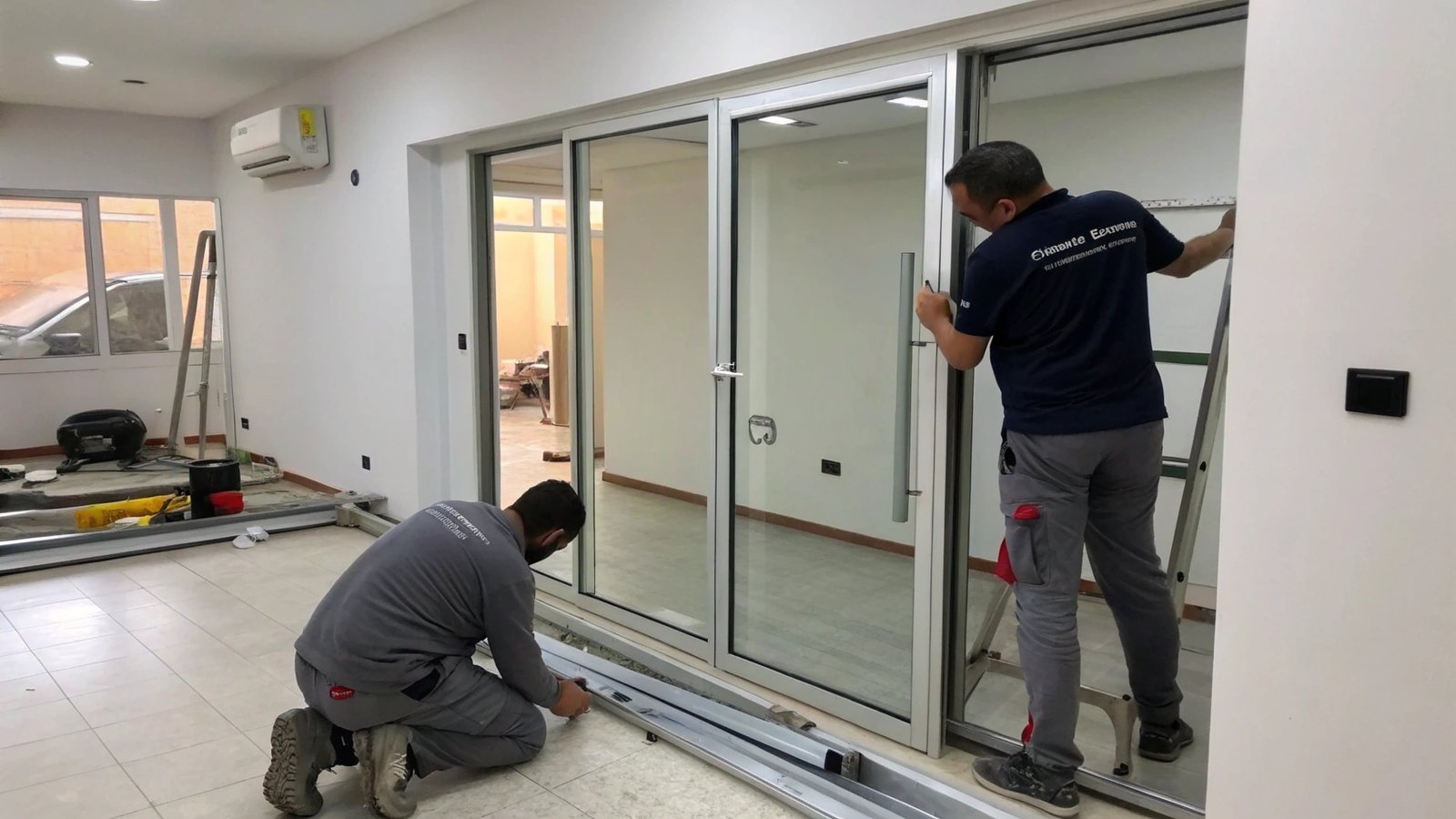
In my line of work, I always tell my clients that maintenance is cheaper than replacement. A systematic approach is best. Don’t just lift the door back on; take a few minutes to find the root cause. Most of the time, the fix requires just a few basic tools and a little bit of patience. Let’s break down the process into clear, manageable steps that will solve the problem for good.
Step 1: A Thorough Cleaning
Dirt, pet hair, and grit are the biggest enemies of a smooth-sliding door. This debris builds up in the track and acts like a roadblock, forcing the rollers to jump. Start by vacuuming the track thoroughly with a crevice tool. Then, use a stiff brush and some soapy water to scrub out any grime that’s stuck on. Wipe it dry with a clean cloth. You’d be surprised how many "broken" doors I’ve seen that just needed a good cleaning.
Step 2: Inspection and Adjustment
With the track clean, look at the rollers. You may need to lift the door off the track to see them clearly. Check if they are cracked, chipped, or have flat spots. If they look okay, the door might just be out of alignment. Most sliding doors1 have adjustment screws on the bottom edge of the door’s side rails. Turning these screws raises or lowers the rollers. Adjust them until the door is level and sits squarely in the frame.
| Tool Required | Purpose |
|---|---|
| Vacuum Cleaner | To remove loose dirt and debris from the track. |
| Stiff Brush | To scrub away stubborn, caked-on grime. |
| Screwdriver | To turn the roller adjustment screws2. |
| Pry Bar (optional) | To help lift the heavy door off the track. |
Why does my sliding door keep falling off the rail?
Is your door not just getting stuck, but completely falling off the rail? This is a serious safety hazard that can damage your door, frame, or floors.
When a door falls completely off, it’s a sign of critical roller failure. The rollers are so worn or broken that they can no longer support the door’s weight, allowing it to lift off the rail, especially when it hits any small bump or debris.
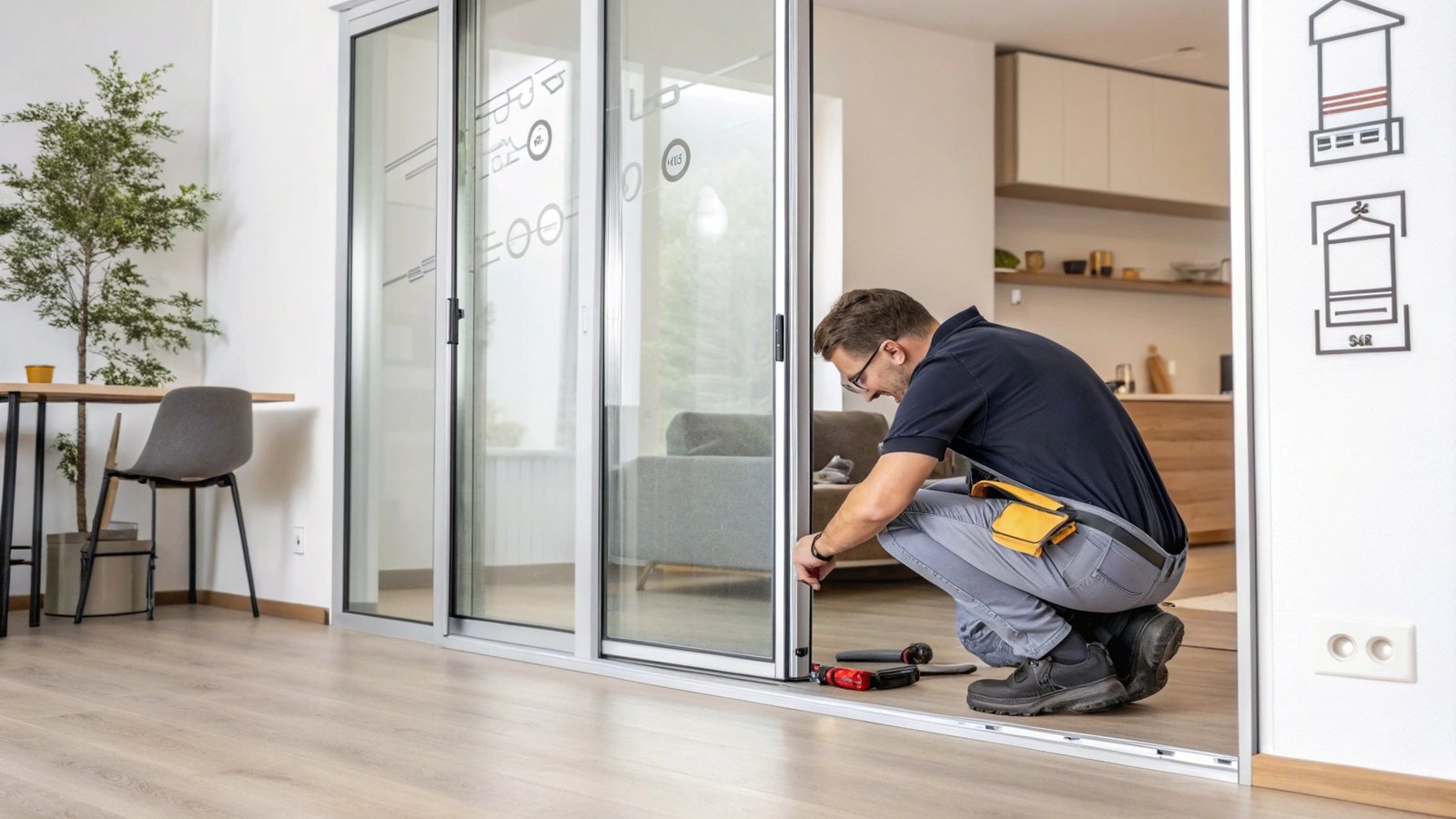
This problem goes beyond simple misalignment. When I source rollers for my clients, whether for a furniture factory or a large construction contractor, we focus on material quality and durability for this very reason. A sliding door, especially a glass one, is incredibly heavy. The entire weight rests on two small roller assemblies. If those assemblies fail, the system fails. The door doesn’t just get sticky; it becomes unstable. It’s crucial to understand what this failure looks like so you can replace the right parts and restore safety and function.
The Role of Rollers
Think of rollers as the wheels and suspension of your door. They are designed to distribute the door’s weight evenly and roll smoothly along the track. When they are in good condition, they keep the door perfectly seated on its rail.
Signs of Critical Roller Failure
When a door consistently falls off, it’s past the point of a simple adjustment. The hardware itself has given up. Here’s what has likely happened to your rollers:
- Extreme Wear3: Instead of being round, the wheels have developed large flat spots or grooves. They no longer roll; they scrape and jump.
- Broken Components: The axle holding the wheel may have bent or snapped, or the bearings inside have seized or disintegrated. The wheel will wobble badly or not spin at all.
- Corrosion: In humid climates, rust can completely seize the roller mechanism4. The frozen roller gets dragged along the track until it derails.
| Condition | Good Roller | Failed Roller |
|---|---|---|
| Shape | Perfectly round | Flat spots, chipped, or cracked |
| Movement | Spins freely and silently | Wobbly, noisy, or seized |
| Material | Intact and solid | Rusted, corroded, or brittle |
How to stop a sliding screen door from falling off track?
Is your lightweight sliding screen door constantly popping out of its track? It’s a common annoyance that ruins a nice breeze by letting all the bugs in.
To fix a derailing screen door, check the spring-loaded rollers at the top and bottom. Use the adjustment screws to increase their tension, which presses them firmly against the track. Also, ensure the lightweight aluminum track is clean and not bent.
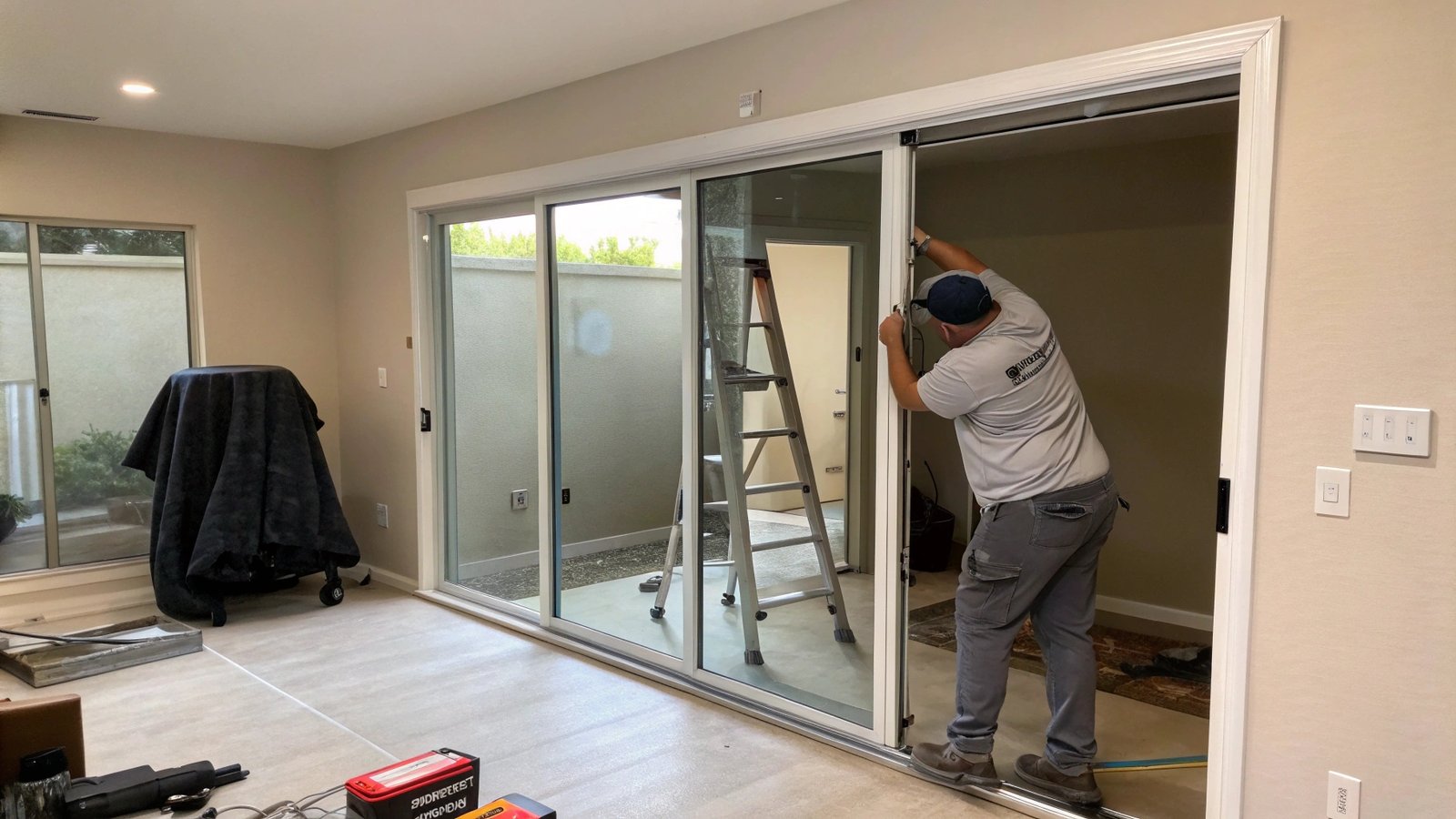
Unlike heavy glass doors, screen doors derail because they are too light. They don’t have the weight to stay seated in the track on their own. Instead, they rely on a different mechanism: tension. I remember a client, a large distributor, who was getting complaints about a batch of screen doors. They thought the rollers were defective. But when we looked, the issue was simply that the installers weren’t setting the tension correctly. It’s a simple adjustment that makes all the difference.
The Secret is Tension
Screen doors use spring-loaded rollers. These springs are designed to push the rollers outward, into the top and bottom channels of the door frame. This constant pressure holds the light door in place and prevents it from hopping out. If the tension is too loose, any little nudge will knock the door off its track.
Adjusting for a Secure Fit
Here’s how to get it right:
- Locate the Screws: You’ll find small adjustment screws near each roller, usually on the face or edge of the door at the top and bottom corners.
- Increase Tension: Using a screwdriver, turn the screws to adjust the spring tension5. Usually, turning it clockwise increases the tension, pushing the roller out further.
- Test the Feel: Adjust each of the four corners until the door feels secure. It shouldn’t rattle or wobble, but it should still slide smoothly without much effort. If it’s too tight, it will be hard to move.
- Check the Track: Screen door tracks are often thin aluminum and bend easily. Gently straighten any dented or bent sections with a pair of pliers, as even a small imperfection can derail a screen door.
How to keep a sliding glass door on track?
You’ve cleaned the track and adjusted the rollers, but how do you prevent this from happening again? Constant repairs are a waste of time, effort, and money.
The key to keeping a sliding door on its track is proactive maintenance. This means regularly cleaning the track, lubricating the rollers with a silicone-based spray, and performing periodic inspections to catch and fix minor issues before they become major problems.
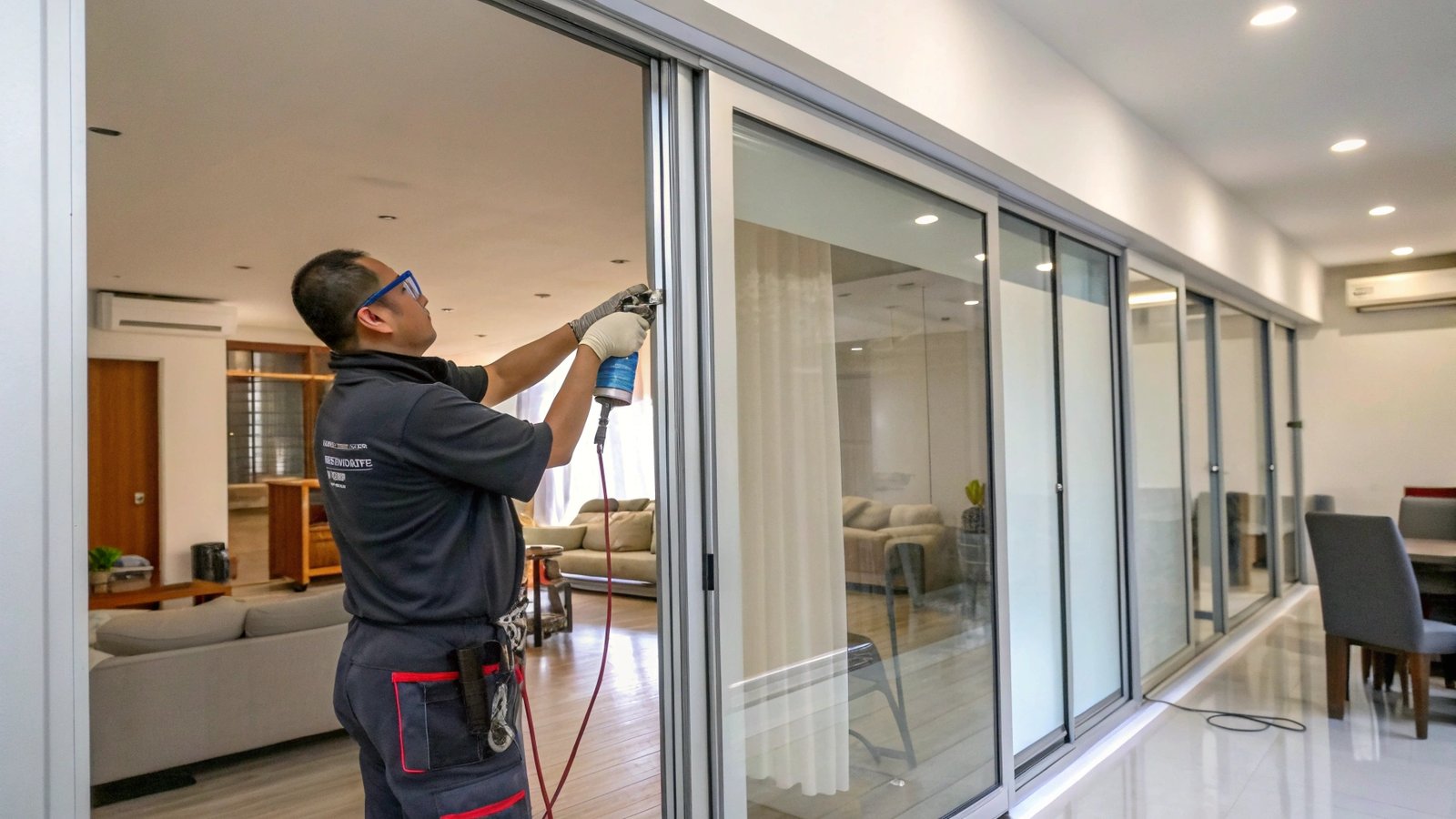
In the hardware manufacturing business, we design parts to last, but even the highest quality components need care. I always advise my B2B clients, from door factories to distributors, to include maintenance guides with their products. A well-maintained door reflects well on their brand and prevents unnecessary service calls. A simple maintenance routine only takes a few minutes every few months and will add years to the life of your sliding door system. Think of it as a small investment to protect a large asset.
Your Quarterly Maintenance Checklist
Set a reminder to perform this simple check every three to four months. It will keep your door gliding like new.
1. The Cleaning Routine
This is the most important step. Debris is the number one cause of roller failure6. Get your vacuum and a cloth and completely clear the track of dust, hair, and outdoor grit. A clean path is a happy path for your rollers.
2. The Right Lubrication
After cleaning, lubrication reduces friction and ensures smooth operation.
- Use: A silicone-based spray lubricant7. It provides a slick surface without attracting more dirt.
- Don’t Use: Oil-based lubricants like generic WD-40. They are sticky and will cause dirt and grime to build up, creating a gummy mess that makes the problem worse.
- How: Apply a small amount directly to the rollers. Slide the door back and forth a few times to spread the lubricant evenly along the track.
3. The Quick Inspection
While you’re down there, take a quick look and listen. Does the door wobble? Do you hear any grinding or scraping? Catching these issues early allows you to make a small adjustment before the door derails and potentially damages the rollers or track.
| Task | Frequency | Notes |
|---|---|---|
| Vacuum Track | Monthly | The most frequent and essential task. |
| Deep Clean Track | Quarterly | Use a brush and cleaner to remove grime. |
| Lubricate Rollers | Quarterly | Use silicone-based spray lubricant7 after cleaning. |
| Inspect Alignment | Quarterly | Check for wobble and listen for strange noises. |
Conclusion
Worn rollers and dirty tracks are the usual culprits behind a derailing door. Regular cleaning and replacing faulty rollers will keep your sliding door working perfectly for many years.
Explore this link to discover essential maintenance tips that can prolong the life of your sliding doors. ↩
Learn about roller adjustment screws to ensure your sliding doors operate smoothly and efficiently. ↩
Exploring the causes of extreme wear can help you identify issues early and extend the life of your door system. ↩
Understanding the roller mechanism is crucial for maintaining door functionality and preventing failures. ↩
Understanding spring tension is crucial for maintaining your screen door’s functionality and ensuring it operates smoothly. ↩
Understanding the causes of roller failure can help you prevent issues and maintain your sliding door effectively. ↩
Explore this link to find top-rated silicone-based lubricants that ensure smooth operation and longevity for your door rollers. ↩ ↩

